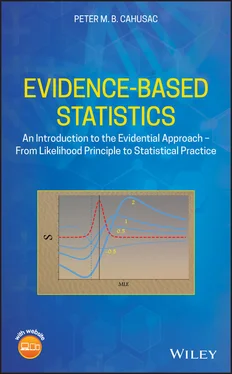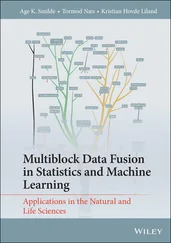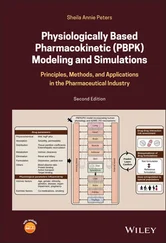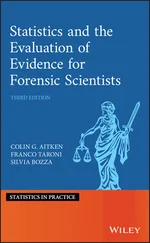This edition first published 2021
© 2021 John Wiley & Sons, Inc. All rights reserved.
All rights reserved. No part of this publication may be reproduced, stored in a retrieval system, or transmitted, in any form or by any means, electronic, mechanical, photocopying, recording or otherwise, except as permitted by law. Advice on how to obtain permission to reuse material from this title is available at http://www.wiley.com/go/permissions.
The right of Peter M.B. Cahusac to be identified as the authors of this work has been asserted in accordance with law.
Registered Office
John Wiley & Sons, Inc., 111 River Street, Hoboken, NJ 07030, USA
Editorial Office
111 River Street, Hoboken, NJ 07030, USA
For details of our global editorial offices, customer services, and more information about Wiley products visit us at www.wiley.com.
Wiley also publishes its books in a variety of electronic formats and by print-on-demand. Some content that appears in standard print versions of this book may not be available in other formats.
Limit of Liability/Disclaimer of Warranty
While the publisher and authors have used their best efforts in preparing this work, they make no representations or warranties with respect to the accuracy or completeness of the contents of this work and specifically disclaim all warranties, including without limitation any implied warranties of merchantability or fitness for a particular purpose. No warranty may be created or extended by sales representatives, written sales materials or promotional statements for this work. The fact that an organization, website, or product is referred to in this work as a citation and/or potential source of further information does not mean that the publisher and authors endorse the information or services the organization, website, or product may provide or recommendations it may make. This work is sold with the understanding that the publisher is not engaged in rendering professional services. The advice and strategies contained herein may not be suitable for your situation. You should consult with a specialist where appropriate. Further, readers should be aware that websites listed in this work may have changed or disappeared between when this work was written and when it is read. Neither the publisher nor authors shall be liable for any loss of profit or any other commercial damages, including but not limited to special, incidental, consequential, or other damages.
Library of Congress Cataloging-in-Publication Data is applied for
ISBN: 9781119549802
Cover Design: Wiley
Cover Images: Inset graph courtesy of Peter M. B. Cahusac, Medicine abstract
background © Zoezoe33/Shutterstock
I would like to thank several people who influenced me during the writing of this book. I am fortunate and honoured to have made acquaintance with Professor A.W.F. Edwards (University of Cambridge) and thank him for his suggestions and reprints. I appreciate the replies to my questions from Professor P. Dixon (University of Alberta) and Dr Scott Glover (University of London). This book would have been difficult to complete without the support of my loving wife Annah Adero. Finally, this book is dedicated to the College of Medicine at Alfaisal University in Riyadh.
Peter M.B. Cahusacgraduated with BSc Hons in Psychology from St Andrews University in 1980, followed by a PhD in neuropharmacology from the Medical School Bristol University in 1984. During a post-doctoral at Oxford position, he became interested in statistics and subsequently obtained an MSc in Applied Statistics from Oxford University in 1992. He taught statistics at Stirling University from 1990 to 2012. He was elected ordinary member of the Physiological Society (UK) since 1993 and then elected Fellow (FTPS) from 2018. He has been a member of the British Pharmacological Society since 2006. He is Fellow of the Royal Statistical Society, and GradStat status since 2009. From 2008, he became particularly interested in the likelihood approach to statistical inference as it appeared to avoid some of the difficulties associated with other approaches. In 2014, along with Dr Patricia de Winter, he published an introductory book on statistics. Currently, he is Associate Professor in Biostatistics and Pharmacology at Alfaisal University, Riyadh, Saudi Arabia.
This book is accompanied by a companion website:
www.wiley.com/go/evidencebasedstatistics

The website includes materials for students (open access):
R statistical code for likelihood ratio and support calculations
Answers
Likelihood is the central concept in statistical inference. Not only does it lead to inferential techniques in its own right, but it is as fundamental to the repeated-sampling theories of estimation advanced by the ‘classical’ statistician as it is to the probabilistic reasoning advanced by the Bayesian.
Thus begins Edwards's remarkable book on Likelihood [1].
Fisher was responsible for much of the fundamental theory underlying the modern use of statistics. He developed methods of estimation and significance testing but also, according to Edwards [1, p. 3] ‘quietly and persistently espoused an alternative measure by which he claimed rival hypotheses could be weighed. He called it likelihood … ’. Neyman and Pearson were drawn to the use of the likelihood ratio, stating ‘…there is little doubt that the criterion of likelihood is one which will assist the investigator in reaching his final judgement’ [2]. Eventually they turned away from using it, when they realized that it would not allow them to estimate the Type I error probability necessary for frequentist statistics. Edwards is not alone when he laments in his 1992 preface ‘Nevertheless, likelihood continues to be curiously neglected by mathematical statisticians’ [1].
Richard Dawkins (biologist and author) once said ‘ Evidence is the only good reason to believe anything ’. However, ‘evidence’ has become an over-used buzz word appropriated in expressions like ‘evidence-based education’. Overused and attached to statements on policy or practice, it is no doubt used with the intention of enhancing or validating their endeavours. Often ‘evidence-based’ statements appear to refer to statistics as providing the evidence. However, we are in the curious situation where the two most popular statistical approaches do not actually quantify evidence. Bayesian and frequentist statistics provide probabilities rather than any weight of evidence. The lesser known likelihood approach is alone in providing objective statistical evidence. All three approaches were developed in Britain (specifically England), yet only the likelihood approach provides admissible evidence in British courts of law.
Many excellent texts in applied statistics make mention of likelihood since it is a key concept in statistical inference. Despite this, few texts give practical examples to demonstrate its use. None are available at the introductory level to explain, step-by-step, how the likelihood ratio calculations for many different types of statistical analyses, such as comparisons of means, associations between variables, categorical data analyses, and nonparametric analyses, are done. The current text is an attempt to fill this gap. It is assumed that the reader has some basic knowledge of statistics, perhaps from an introductory university or school course. Otherwise, the reader can consult any one of a large number of excellent texts and online resources.
Читать дальше













